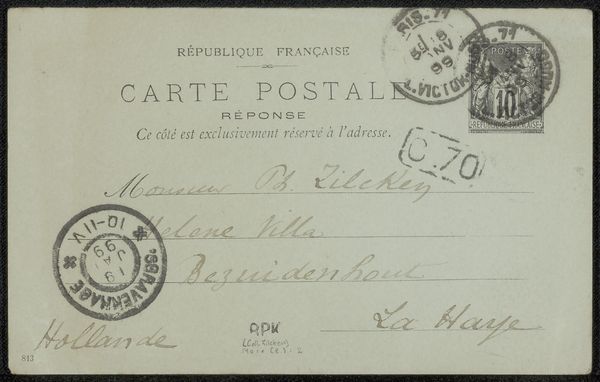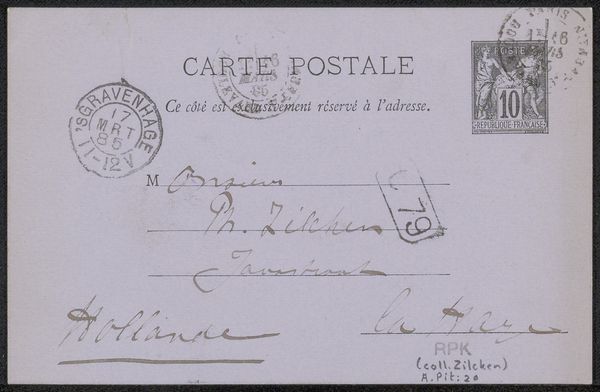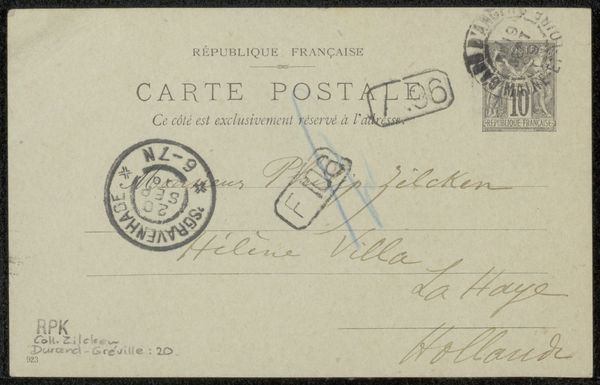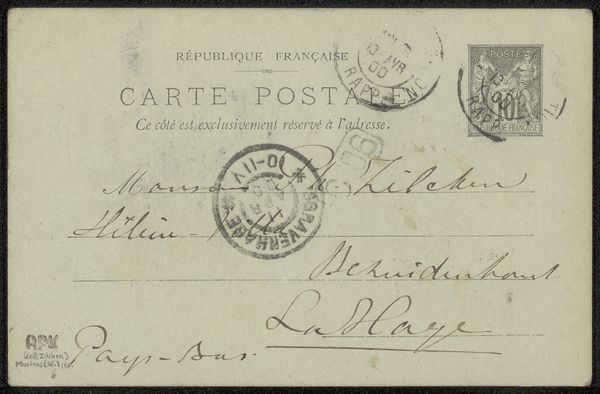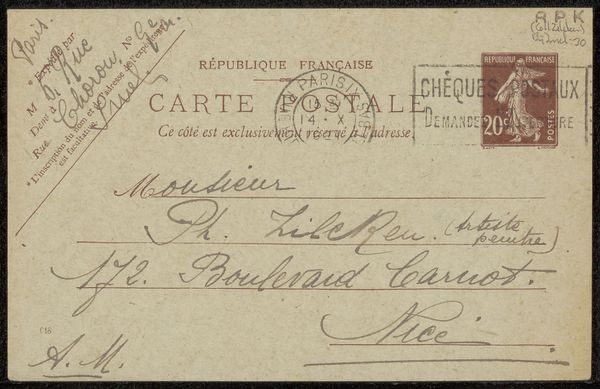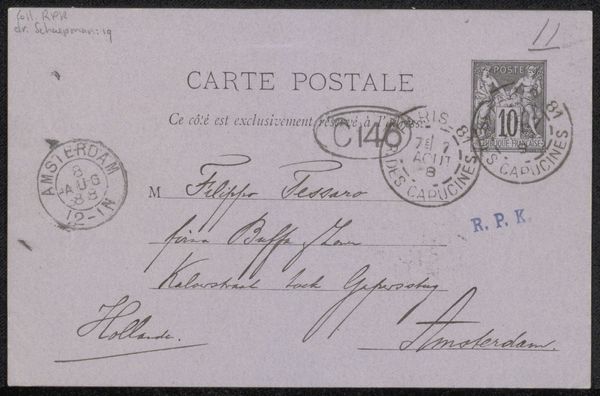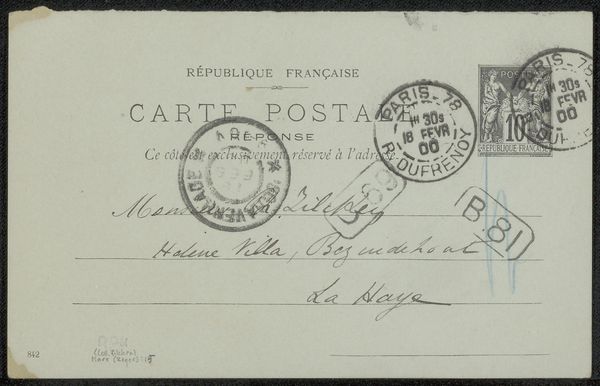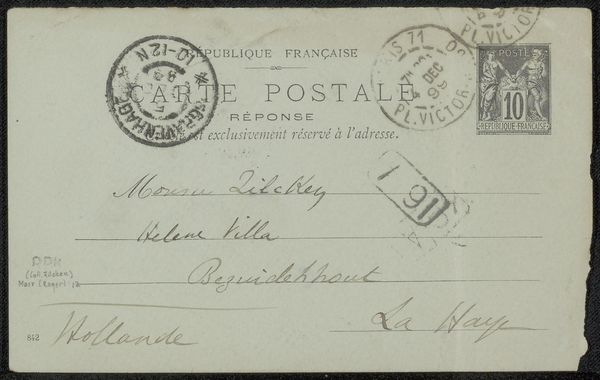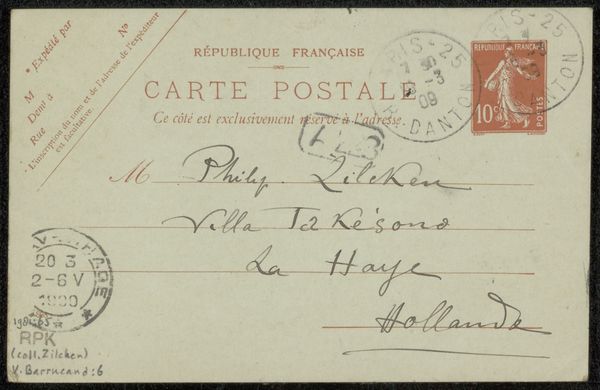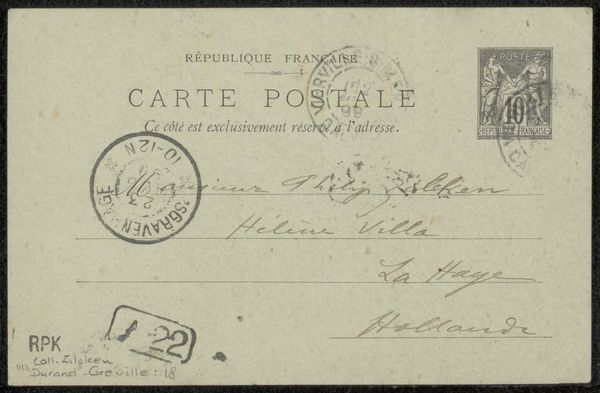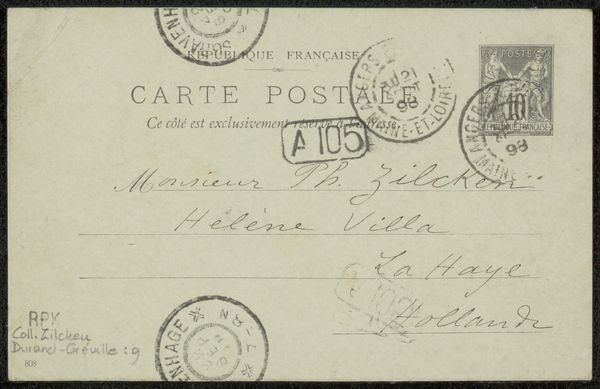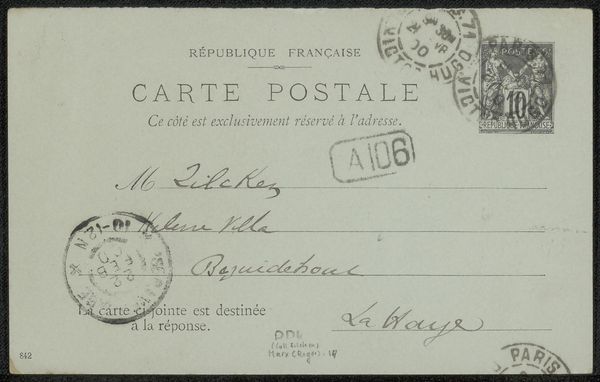
mixed-media, print, paper, pen
#
mixed-media
# print
#
hand drawn type
#
paper
#
pen-ink sketch
#
pen work
#
pen
#
calligraphy
Copyright: Rijks Museum: Open Domain
Curator: Looking at this "Briefkaart aan Philip Zilcken," a mixed-media piece that combines print and pen work on paper from before 1897 by Stéphané Mallarmé, one is struck by how intimate and unassuming it seems. Editor: There is something almost ghostly about it. Ephemeral and haunting, a remnant of a conversation only partially accessible to us. What statement might we infer about privilege in that silence, I wonder? Curator: Precisely. As a physical object, its survival allows us a tangible connection to fin-de-siècle postal systems and social networks. The pen-ink sketch and calligraphy aren’t just aesthetic choices; they represent particular modes of communication that reflect the sender's engagement with materiality and production of a specific literary circle. Editor: It certainly evokes a sense of an elite exchange. Consider how class and education dictated access to this form of written correspondence, even in what was ostensibly a more democratic medium like the postcard. Curator: Right. Note the careful penmanship, the selection of paper, the precise placement of the postal stamp and seals. It’s far more intentional and carefully crafted than a quick, disposable note might be. One can discern through this format an artist trying to connect to his patron, hoping to build that material relationship between himself and his counterpart. Editor: Absolutely, and the stamps and postal markings become silent witnesses. They underscore how identities—national, economic, social—were negotiated and solidified within these physical systems of exchange. How interesting it is to see class being conveyed within these objects. It wasn't just content, it was also access. Curator: For sure. Viewing it from a materialist lens highlights the role of infrastructure—postal networks, paper mills, print shops—in shaping artistic and intellectual exchange. I think that’s important here: these are relationships only material processes are capable of creating, solidifying that bond to this day. Editor: Agreed. It also prompts me to ponder the colonialist roots embedded in that seemingly benign postal infrastructure and how such systems facilitated global power imbalances. These material objects were always political ones. Curator: Ultimately, through a materialist lens we begin to understand how artists make. In considering materiality alongside sociohistorical implications we can examine the many different layers, the nuances within art's processes. Editor: And perhaps that nuanced understanding pushes us to resist aestheticizing the past and engage more critically with the complex and inequitable histories that inform our present moment.
Comments
No comments
Be the first to comment and join the conversation on the ultimate creative platform.

